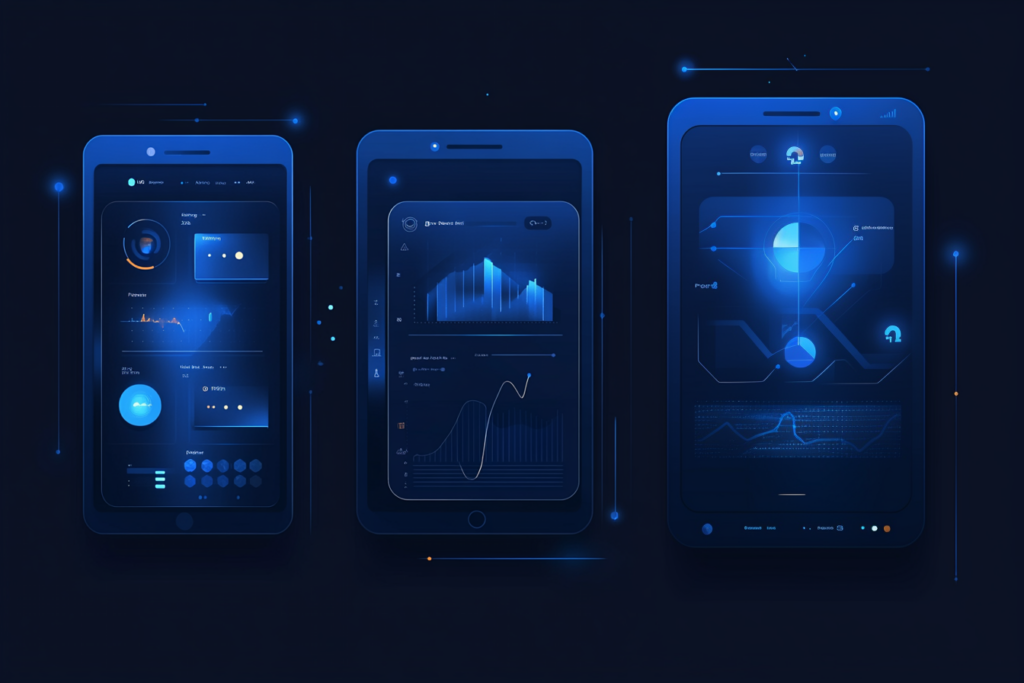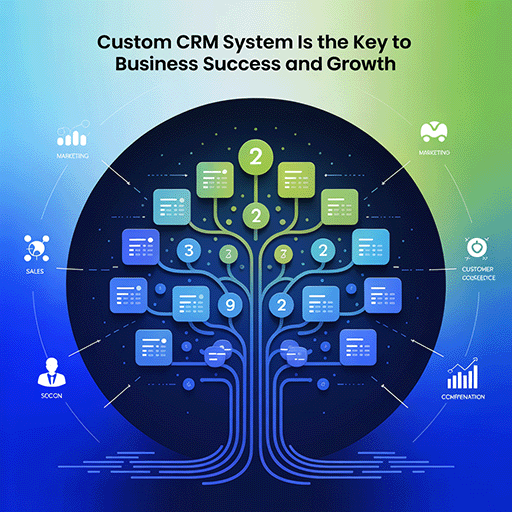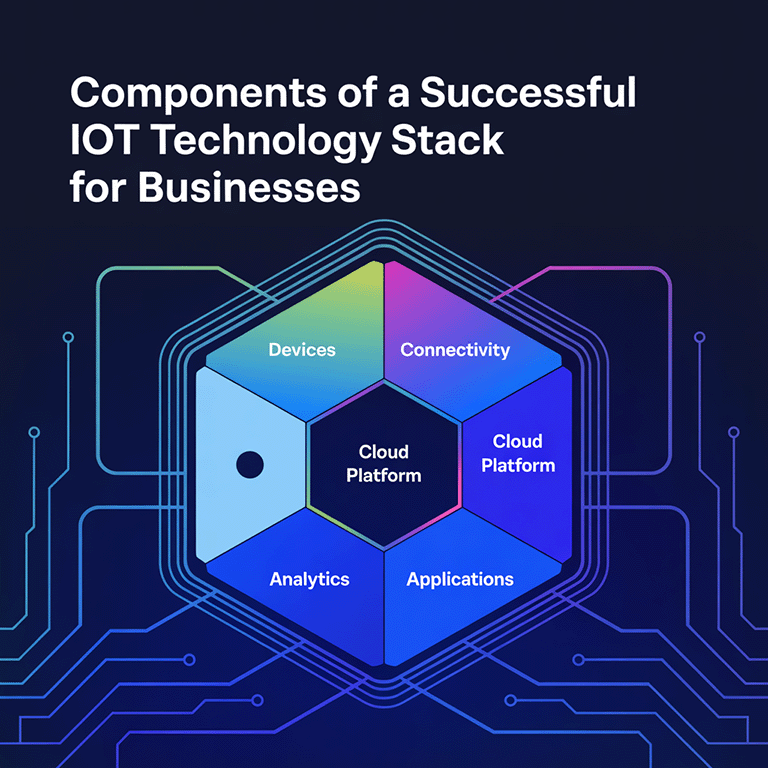The main difference between PoC, MVP, and prototype lies in their purpose and usage at various stages of product development. PoC validates an idea’s feasibility, a prototype demonstrates the look and feel of the product, and an MVP delivers a basic, functional version to test market demand. Understanding these distinctions is crucial for aligning your product development with business goals and optimizing resources.
As a startup owner, you might have already heard that 90% of startups fail. In fact, most of these failures happen within the initial stages. Keep reading this blog to ensure your business falls in the 10% bracket.
In this blog, we’ll explore PoC vs. prototype vs. MVP, their features, and goals, as well as best practices for each, including real-world examples.
PoC vs Prototype vs MVP
PoC or proof of concept refers to validating a product with target customers to ensure the idea is technically feasible. A mobile application prototype analyzes the idea’s shape, such as user interaction and flow. An MVP is a functional version of the product with just the key features to allow the owner to obtain user feedback.
In this section, we dive deeper into each concept. Apart from sharing their definitions, we will clarify the goals and features of PoC, prototype, and MVP.

What is PoC?
Proof of concept can be referred to as the litmus test for ideas in the world of product development. It answers the key question: “Is the concept capable of working in the real world?“ Hence, it is usually the primary step in product development, which is the crucial difference between PoC and MVP. Generally, PoCs are utilized to assess the proposed solution’s potential, verify assumptions, and identify technical difficulties. To learn more about PoC, read our blog post.

Some of the primary goals of a PoC are:
-
Gain Investor Attention: A PoC can help present the idea to early investors to attain seed funding.
-
Identify Risks: A PoC can help identify potential challenges and risks that may arise during product development.
-
Validate Feasibility: The main goal of a PoC is to determine if the proposed solution is technically feasible.
-
Save Time: A PoC helps avoid the wastage of time that would have occurred after hiring developers and finding out that the product has technical viability issues.
-
Choose the Right Technology: By creating several PoCs using numerous technologies, the ideal technology stack for the product can be identified.
In addition to helping attain these goals, a PoC also has the following features:
-
Short-Term: A PoC is generally performed over a short period.
-
Basic Demonstration: When it comes to PoC vs prototype vs MVP, unlike an MVP or prototype, a PoC does not consist of full functionality. Instead, it provides a basic demonstration of a concept or feature.
-
Limited Scope: A PoC is generally a small-scale task primarily focused on validating a particular aspect of the product.
What is a Prototype?
Where the proof of concept is known to be the first test for an idea’s feasibility, a prototype refers to the journey toward bringing the product to its most usable shape. If you are wondering, “Why might a company build a prototype or minimum viable product,” it’s because a prototype is a visual or tangible representation of the product that is very close to the final deal.
In fact, a prototype is more like the first draft that enables stakeholders and teams to envision and interact with the product’s key features. Thus, it is ideal for representing the user journey and experience and can range from mere wireframes and sketches to complex, interactive models.

The key goals of a prototype are:
-
Product Visualization: A prototype creates a functional visual representation of the product. This allows stakeholders to experience the product personally. It bridges the gap between tangible reality and abstract concepts.
-
Test Usability: Prototypes are used for testing the user experience and usability of the product, aiding the identification of areas for improvement.
-
User Feedback & Idea Refinement: A prototype is ideal for testing the product through initial feedback and allows the refinement of ideas.
Furthermore, prototypes have the following features:
-
Iterative: The process of prototyping is iterative, wherein multiple versions of the product are created and refined based on user feedback.
-
User-Centric: A prototype’s focus is mainly on the user experience, which makes it the perfect tool for collecting feedback from potential customers.
-
Interactive: Prototypes simulate the product’s user interaction.
Before we move to the difference between POC and MVP, let us first understand what an MVP is.
What is MVP?
First, are you aware of the commonalities between Figma, Slack, Dropbox, and Uber? Well, they launched their projects with an MVP.
A minimum viable product or MVP is a product’s primary version that can be released. It comprises just the key features essential for addressing the problem or needs of the market. A crucial step in product development, an MVP enables businesses to test the target audience, collect feedback, and iterate before final investment.

Some of the main goals that an MVP helps attain are:
-
Risk Minimization: By launching a product in the market with just the core features, a company minimizes its risk of creating a product that is not required in the market, thus saving cost, time, and resources.
-
Market Demand Testing: MVPs are mainly used to test the demand for a product in the market and to gather feedback from early customers.
-
Quick Product Launch: The main goal of an MVP is to launch a product in the market as fast as possible.
An MVP is valuable in several ways to a company due to its following features:
-
Scalability: Minimum viable products are designed so that they can be scaled. Thus, they have the potential for further functionality and added features, which may be considered after collecting user feedback.
-
Market Ready: Now, when we talk about PoC vs prototype vs MVP, a minimum viable product is ready for the market, unlike a PoC or prototype. An MVP can be released in the market and used by the target audience.
-
Key Functionality: An MVP comprises the product’s core features only, which are essential for solving the problem it addresses or the users’ needs.
In this blog post, we provide just an overview of the MVP, but we’ve already published an article that explores it in-depth. To learn more about MVP, please click here.
Key Differences
Every product development project is different, which is why each requires a different approach as well. A complex or disruptive business idea may have to go through all the stages of development to guarantee a cost-effective method.
So, if you are considering using all three steps of product development, it is essential for you first to understand POC vs prototype vs MVP. In fact, it may turn out that you may need just one or two of these, based on your product requirement.
A prototype and PoC are used at the pre-product stage and generally require a low to medium budget for investment. When it comes to MVP development, the company enters the product stage with core features and functionalities to see how the market responds to the idea based on user feedback. Unlike a PoC or prototype, an MVP needs a high investment and months to build.
To demonstrate the difference between the three approaches, we’ve prepared a table that compares PoC vs prototype vs MVP:
|
Criteria |
PoC |
Prototype |
MVP |
|
Duration |
Short-term |
Medium-term |
Long-term |
|
User Interaction |
Least |
High |
Maximum |
|
Functionality |
One Feature |
Several Features |
Minimum Viable Features |
|
Stage |
Idea Validation |
Design and Development |
Pre-launch |
|
Purpose |
Validate Feasibility |
Visualize Product |
Test Target Audience |
|
Further Use |
Prototype Development |
MVP Development |
Final Product Development |
|
Revenue Generation |
Not for Sale |
Not for Sale |
Sells to Initial Adopters |
|
Development Time |
Days |
Days/Weeks |
Weeks/Months |
|
Budget for Investment |
Small |
Medium |
High |
|
Evaluates Risk |
Technical Problems |
User Dissatisfaction |
No Market for Product |
|
Audience |
Developers and Researchers |
Stakeholders, Focus Groups, and Investors |
Investors and Early Adopters |
Overall, a PoC focuses on the feasibility of the idea, tests the technical segments, and lowers the risk of further product development. In most cases, it is an internal process and is not the ideal choice for representing the idea to investors. If a company wishes to demonstrate how its product will function or look without developing it, it must consider a product prototype.
A prototype does not address the business’s logic behind the product. However, it highlights its specific functionality or UI/UX. Additionally, it can be sent to a particular focus group for early feedback, which allows companies to discover the opinions of the concept and identify areas for improvement in the flow. It is also ideal for gaining investor’s attention and securing funding for further product development.
Last but not least, the difference between an MVP and a prototype is that an MVP is a functional product with primary features. It is not the final product but is ready to be launched in the market. Businesses can use an MVP to gather user analytics and refine product features.
If you are still unsure about when you should consider starting with a PoC, a prototype, or an MVP, don’t worry. We’ve got you covered!
Begin with a PoC when:
-
you wish to share technical knowledge with the product development team
-
you are required to decide on the ideal technology for the product
-
you need to check if the idea is practical enough to work in the real world
-
you wish to form a revolutionary, unique product
Consider a prototype when:
-
you do not have much time to demonstrate your idea
-
you are looking for initial feedback from the target audience
-
you are looking for secure seed-stage funding
-
you want to visualize the flow
Start with a minimum viable product when:
-
you are looking to minimize the risk of failure
-
you want to quickly earn revenue from the idea
-
you have to begin rapidly at a reasonable cost of development
-
you want early adopters to aid you in evaluating market response

Why Might a Company Build a Prototype or Minimum Viable Product?
Both prototype and MVP require time and resources to be built. The difference between MVP and prototype is that an MVP can help earn revenue. You can read our article on how to build an app and earn on it.
So why might a company build a prototype? Why might a company build an MVP instead of creating the full-fledged final product and launching it to the market? All your answers will be answered in this section.
Purpose of Prototyping
Prototyping is a bridge between the development stage and the concept stage. The primary purpose of prototyping is to form a tangible representation of the product idea, enabling stakeholders to have a visual picture of the product before finally moving into the full-scale development phase. The process aids in determining possible problems, collecting user feedback, and design refinement.
Benefits of Prototyping
-
Cost-Effective Iteration: Prototyping allows for iterative design and development, helping minimize the risk of costly alterations in the final stages of product development.
-
Stakeholder Alignment: Prototypes offer an interactive and visual model that aids in aligning all stakeholders on the idea and vision of the product without leaving any gaps.
-
Enhanced Usability: By testing the experience of users in the initial stages, businesses can determine and address any issues and work on areas for improvement.
Purpose of Building an MVP
The main purpose of a minimum viable product is to launch a product to the market as fast as possible with core features required for meeting the requirements and problems of early adopters. Such an approach enables businesses to test the market for the product’s need and iterate on the product prior to investing on a large scale in product development.
Benefits of Building an MVP
-
Minimized Risk: MVPs help reduce the risk of investing in a product that may not meet the market’s needs.
-
User Feedback: Early adopters can provide feedback on the product, which can further lead to informed product development.
-
Quick Market Entry: MVPs allow businesses to enter the market quickly, helping them gain a competitive edge over their rivals and validating market demand before launching the final product.
Which is a Best Practice Related to the PoC?
Best Practices for Conducting a PoC
To ensure the success of a proof of concept, it is crucial to comprehend which functionalities must be proven feasible and the reason for the same. Here are some steps for the best practice a company can consider to form an effective proof of concept.
-
Define Clear Objectives and Goals: Before creating a proof of concept, it is crucial to define clear objectives and goals. This helps keep the PoC focused and aligned with the project’s overall goals. The plan should include the scope, goals, and problems to be addressed. Remember to keep the scope narrow and limit the resources and time allotted to the project.
-
Involve Project Stakeholders: Involving the stakeholders in the process of creating proof of concept helps ensure that all sorts of perspectives are taken into consideration and that the PoC focuses on all essential elements of the project.
-
Define the Deliverables: Which is a best practice related to the PoC? Plan success metrics to utilize as milestones that the project must meet to attain feasibility.
-
Iterate based on the Results: Utilize the proof of concept results to iterate and refine the concept. If the PoC implies substantial problems, consider revising the approach before moving on to the next phase of product development.
-
Track the Metrics: Verify your results against success metrics to check if the product idea meets the performance goals.
Case Studies or Examples
Now that you know which is the best practice related to the PoC, we believe you will get a better understanding of it through industry examples. If you are considering creating a proof of concept for your product, these examples of Zappos, Netflix, and Tesla will definitely help you understand how PoC works in the real world.
Zappos: PoC to Test Online Shoe Sales Feasibility
Industry: E-commerce
Objective of PoC: To validate the concept of selling shoes online without any inventory
Overview: Zappos, a giant in the e-commerce world, began as just a proof of concept. Nick Swinmurn, the company’s founder, was looking to test the viability of selling shoes online, which was a new idea at the time. Rather than investing a significant amount of the budget in inventory, Swinmurn decided to begin with a PoC.
PoC Execution: Swinmurn clicked pictures of several pairs of shoes from local stores. He then posted them on a plain website. Later, when an order was placed, Swinmurn purchased the pair from a local store and shipped the item to the customer.
Result: This PoC showed a high demand for online shoe purchases. The success of this proof of concept led to Zappos, a multi-billion dollar business acquired by Amazon.
Tesla: PoC to Validate Electric Vehicle Battery
Industry: Automotive
Objective of PoC: To validate the feasibility of electric vehicle battery technology for driving long-range
Overview: When Tesla was initially conceptualized, the idea of an EV with the potential of long-range driving seemed skeptical. The key concern was whether such a technology could support the requirements of a consumer vehicle over long distances.
PoC Execution: Tesla was entirely focused on creating a battery system capable of offering enough range while maintaining safety and efficiency. The proof of concept consisted of testing these systems in initial prototype vehicles, focusing on safety, charging times, and range under various circumstances.
Result: The PoC was successful – it validated the battery technology’s feasibility, proving that an electric car could compete with the conventional internal combustion engine vehicle regarding range. This success resulted in the development of the Tesla Roadster, a full range of electric vehicles. This completely transformed the automotive industry.
Netflix: Streaming Video Content
Industry: Media & Entertainment
Objective of PoC: To prove the feasibility of streaming video content via the internet
Overview: Originally a service for renting DVDs, Netflix wanted to explore the potential of delivering video content over the Internet. At the time, the concept of online video streaming was not popular. The idea was to validate that consumers would switch from conventional physical media to streaming.
PoC Execution: Netflix began by providing a small selection of TV shows and movies to its current subscribers for streaming. It focused on testing the technology, consisting of user satisfaction, streaming quality, and bandwidth requirements.
Result: The PoC, as we can see today, was immensely successful. It not only portrayed that streaming is highly feasible but also showed that it is highly desired. The early validation resulted in Netflix pivoting its business model entirely towards streaming.
Final Word
Comprehending the difference between PoC and MVP, as well as the difference between MVP and prototype, is extremely important for successful product development. Each approach has a unique purpose and benefits and is used at different stages of the development process. While PoC aids in validating the feasibility of an idea, a prototype enables product visualization and testing, and an MVP allows quick market entry with core functionality.
Picking up the most suitable approach depends on the particular goals and objectives of the project. By understanding these concepts, businesses can mitigate risks, reduce resources and time invested in the project, and augment the possibility of a successful product launch. If you find it challenging to decide on the right approach, LITSLINK is here to help you navigate these stages and choose the ideal approach for your project. Contact LITSLINK today!





